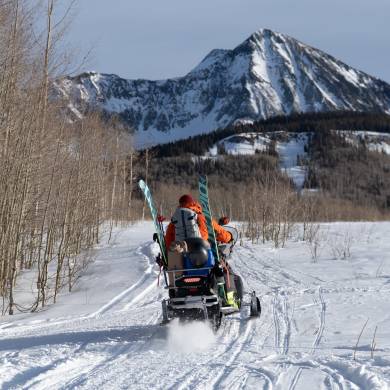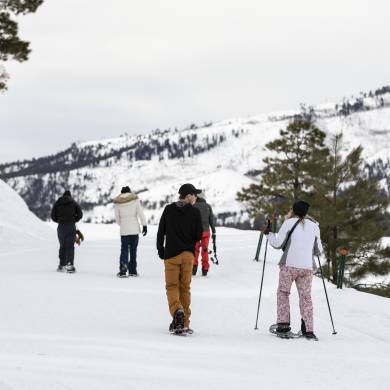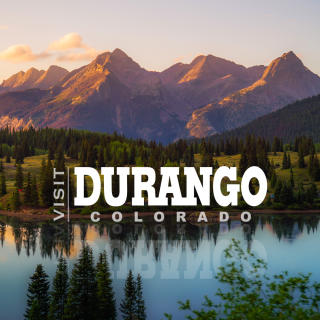The Durango & Silverton Narrow Gauge Railroad offers riders some of the most scenic views in the state.
There’s no shortage of things to do in Durango, Colorado. Whether you’re on the lookout for a heart-pumping hike, a high-adrenaline adventure, or something the whole family can enjoy, there’s something just outside city limits for you. Among the best adventures is the Durango & Silverton Narrow Gauge Railroad, but it’s not just a phenomenal modern-day adventure. The railroad is actually closely tied to Durango’s history.
By the late 19th century, thanks to successful mining in the San Juan Mountains, southwestern Colorado needed a real town. The Denver & Rio Grande Railway chose the site of present day Durango, on the banks of the Animas River, to build its depot. The railroad officially made its way into the Animas Valley in August 1881, and began building the line out to Silverton later that year.
The route to Silverton was completed in 1882. Unlike many historic railroads originally used primarily for freight, the Durango & Silverton Narrow Gauge Railroad has always served passengers; service began almost immediately when the route was finished. It was also used to transport gold and silver ore mined in the San Juans. (In fact, the historic railway estimates that it’s transported more than $300 million worth of precious metals via this route.)
Successful mining operations, along with the advent of the car and the designation of Mesa Verde National Park in 1906, resulted in a major growth spurt in populations in Durango, Silverton, and nearby Ouray around the turn of the century.

In the ensuing years, though, the Durango & Silverton Narrow Gauge Railroad faced some serious adversity. In 1889, a fire destroyed much of Durango’s downtown area, and a few years later, two major mines, the Guston and Yankee Girl, played out. Next, the 1918 Spanish Flu Epidemic hit Silverton, wiping out a tenth of the township, followed by the closing of two more major silver operations and a host of financial problems (including hardship brought on by World War I) and natural disasters, the combination of which resulted in the closure of the Silverton branch.
The Silverton railroad reopened briefly between World War II and the Cold War, but by the late 1940s, it was on the verge of a second closing. Perhaps unsurprisingly, given its stunning location, the railway was saved by its natural surroundings when Hollywood discovered the San Juans and began filming movies, including the classic Western Butch Cassidy and the Sundance Kid, in the area.
Today, visitors to southwestern Colorado can still relive the vibrant history of the Old West with a ride on the Durango & Silverton Narrow Gauge Railroad year-round. The train is still completely coal-fired and steam-operated, with locomotives dating back to 1923-25, and many of the cars dating back to the 1800s. Regardless of your inclination—whether you’re more interested in just seeing the sights or jumping in with both feet—there’s something for you.
For Families

Some parents might be cringing at the thought of wrangling a herd of kiddos on a train car, but the railway has you covered. Concessions and bathrooms are available on every ride, and the cars are heated during the winter months, so there’s never a bad time to take your family for a ride. (Between early May and late October, the train travels all the way to Silverton. From mid-November to May, you’ll take an abbreviated trip to Cascade Canyon.)
The railway makes it easy for families to enjoy the tracks with various packages and discounts throughout the year, including a Polar Express train ride in November and December. Kids ride free to Cascade Canyon during the month of February. There’s also a military discount available.
For Hikers
When it arrives at its terminus in Silverton, the railroad deposits passengers right at the doorstep of two of Colorado’s most spectacular wilderness areas: the Uncompahgre, home to (and a perfect base camp for) two Fourteeners, and the Weminuche, the state’s largest wilderness area, which is actually bisected by the railway (it’s got three Fourteeners, as well). You can also hop off the train at the Needleton Flagstop, halfway between Durango and Silverton, and hike out to Chicago Basin or Twin Lakes. The train sees plenty of passengers with hiking and camping gear, so keep an eye out for their Backpacker Special during the summer.
For Adrenaline Junkies

Combine the novelty of riding an historic rail line with the excitement of running rapids on the Lower Animas River. That’s the idea that inspired Mild to Wild Rafting & Jeep Tours, an authorized vendor for train tickets, to run trips where passengers ride the rails and the river. The day starts with a ride on the train, following the Animas River through canyons and secluded wilderness. Passengers disembark in Silverton to window shop and have lunch, then head back toward Durango on the Million Dollar Highway. That’s when the adrenaline part comes in: with its steep drops and tight curves, the highway will have you primed for your adventure on the Lower Animas, where you’ll get to run Class II and III rapids. (Mountain Waters runs similar trips and is also an authorized outfitter.)
For Motorheads
If a full day on a train won’t quite fulfill your need for speed, you’re in luck. Several local outfitters offer jeep tour/train packages, and in the winter, there’s a corresponding snowmobile tour (pricing varies based on age and whether drivers are licensed). Durango Rivertrippers & Adventure Tours, for example, runs a package deal with a one-way trip on the train, followed by a 4X4 tour over breathtaking Kennebec Pass, while Mild to Wild offers a chance to explore ghost towns near Silverton via 4X4.
For History Buffs

See for yourself why the Durango & Silverton Narrow Gauge Railroad is still around more than a century after its first journey. Historic Narration tours are available year-round, with different stories told in the spring, summer, and during the holiday season. Actors in authentic period costumes tell passengers first-person stories about what it was like to live in the American Southwest during the boom days, and narrators include the personalities of railroad entrepreneur Otto Mears, Durango Record founder Caroline Romney, and Robert Dwyer, Durango’s first Marshall, among many others. Historic narration pricing ranges from $85/adult in the winter months to $119/adult (or $153/adult for Deluxe service, which is in a restored 1887 closed-vestibule coach) from May to October for a full-day excursion.



